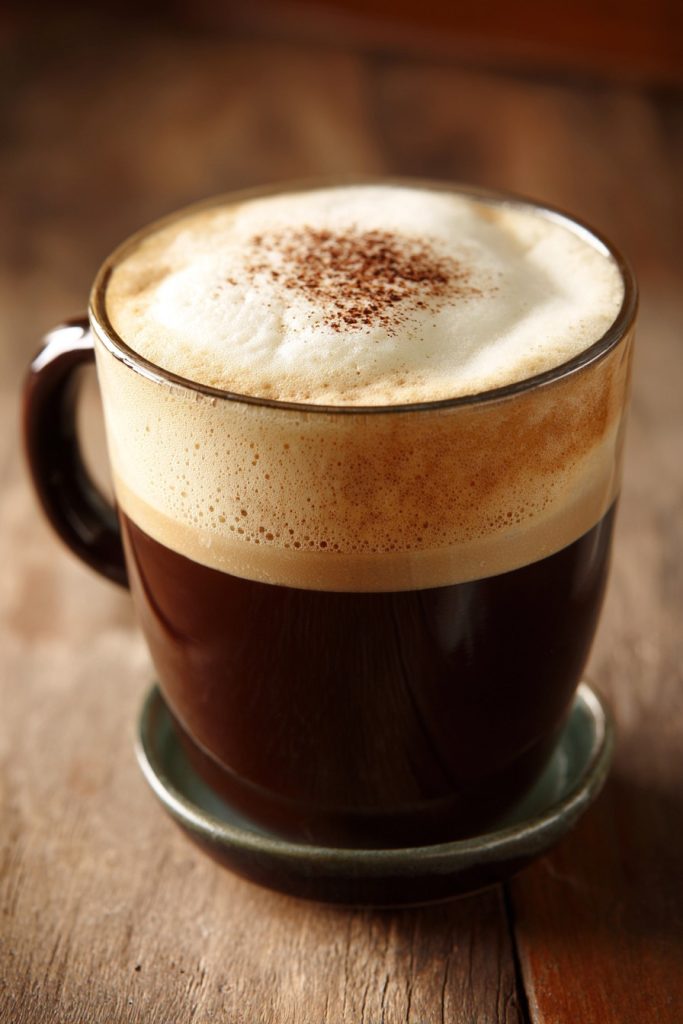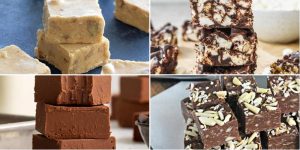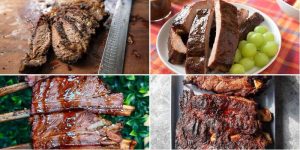Waking up without coffee is like trying to start a car without an engine—technically possible if you’re willing to push it downhill, but why would you subject yourself to such unnecessary suffering? Welcome to the magical world where coffee beans and dairy products engage in the most beautiful partnership since peanut butter met jelly. Whether you’re a morning zombie or an afternoon slump survivor, this recipe transforms basic caffeine consumption into a delightful ritual that might just make you forget you’re an adult with responsibilities.
Why This Recipe Works
- The temperature dance between hot coffee and cool milk creates a perfectly balanced beverage that won’t scorch your taste buds or leave you with lukewarm disappointment
- Using freshly ground beans ensures maximum flavor extraction, because pre-ground coffee is basically the culinary equivalent of yesterday’s news—technically still informative but lacking that fresh perspective
- The specific milk-to-coffee ratio prevents either ingredient from staging a hostile takeover, maintaining harmony in your mug like a well-choreographed dance routine
- Proper brewing technique extracts just enough bitterness to remind you life isn’t always sweet, while the milk provides the comforting illusion that everything will be okay
- The optional sweetener addition respects your personal life choices without judgment, unlike your aunt who keeps asking when you’re going to settle down
Ingredients
- 2 tablespoons freshly ground coffee beans (medium grind, because we’re not savages)
- 1 cup filtered water (tap water is fine if your municipal water doesn’t taste like regret)
- 1/2 cup whole milk (the creamier, the dreamier—though any milk variety will do in a pinch)
- 1-2 teaspoons granulated sugar or sweetener of choice (optional, for those who like their mornings with a side of denial)
- Pinch of salt (the secret weapon that makes everything better, much like finding money in last winter’s coat)
Equipment Needed
- Coffee grinder (unless you enjoy the inconsistent texture of pre-ground disappointment)
- Drip coffee maker or French press (choose your weapon wisely)
- Measuring spoons and cups (eyeballing is for rebels and people who enjoy chaotic mornings)
- Mug (preferably one that matches your personality—chipped and cynical or bright and optimistic)
- Small saucepan or milk frother (for heating your dairy delight)
- Thermometer (optional but recommended for precision heating)
Instructions

Grind and Prepare Your Coffee Beans
Begin your caffeinated journey by measuring out two tablespoons of whole coffee beans—because using pre-ground coffee is like watching a movie spoiled by trailers; you’ll get the general idea but miss all the nuanced goodness. Grind those beautiful beans to a medium consistency that resembles coarse sand, not beach pebbles or talcum powder. This specific grind ensures optimal extraction without turning your brew into bitter punishment. While your grinder does its magical work, measure one cup of fresh, cold water—filtered if your tap water has more personality than you’d prefer in your morning beverage. Pro tip: Always grind beans right before brewing to preserve those volatile aromatic compounds that make coffee smell like heaven’s alarm clock. The grinding process should take about 15-20 seconds depending on your grinder’s enthusiasm level, and you’ll know it’s perfect when the aroma makes you momentarily forget about your mortgage.
Brew Your Coffee With Precision
Now comes the main event—transforming those ground beans into liquid motivation. If using a drip coffee maker, place your medium-ground coffee into the filter basket and pour that measured cup of water into the reservoir. Press the magical button that separates civilized society from chaos. For French press enthusiasts, add your grounds to the carafe, pour in hot water heated to precisely 200°F (just below boiling—we’re making coffee, not torturing the beans), and let it steep for exactly four minutes before pressing down slowly. Watch as the water darkens like a storm cloud gathering caffeine instead of rain. The brewing process should fill your kitchen with an aroma that could wake the dead—or at least your teenager. When complete, you should have approximately 3/4 cup of strong coffee that looks as dark as your sense of humor before that first sip.
Heat and Froth Your Milk
While your coffee brews, turn your attention to the milk—coffee’s better half that makes everything smoother, much like a good friend who knows when to change the subject. Pour 1/2 cup of whole milk into a small saucepan and heat it over medium-low heat until it reaches 150°F, which is warm enough to be comforting but not so hot it scalds and develops that unpleasant skin. If you’re fancy and own a milk frother, now’s your time to shine—froth that milk until it develops a creamy microfoam that would make a barista nod in approval. No frother? No problem! You can achieve similar results by vigorously whisking the heating milk or transferring it to a sealed jar and shaking like you’re mad at it for personal reasons. The milk should increase in volume by about one-third and develop tiny, uniform bubbles that promise textural delight.
Combine and Sweeten Your Creation
This is where magic happens—the great unification of coffee and milk. Pour your freshly brewed coffee into your favorite mug, leaving enough room for the milk to join the party without causing a spillage disaster. Slowly pour your heated (and optionally frothed) milk into the coffee, watching as they swirl together in a beautiful caffeinated ballet. If you’re adding sweetener, now’s the time—sprinkle in 1-2 teaspoons of sugar or your preferred alternative and stir gently until dissolved. Here’s a pro tip nobody tells you: Add a tiny pinch of salt to cut any residual bitterness and enhance the overall flavor profile—it’s the culinary equivalent of finding the perfect lighting for a selfie. The final mixture should be a uniform caramel color, neither too dark nor too pale, with a creamy surface that promises comfort in liquid form.
Customize and Serve Immediately
Your milk coffee masterpiece is complete, but the personalization opportunities are endless. Taste your creation and adjust accordingly—more sugar if you’re having one of those days, more coffee if you’re having one of those weeks. If you prefer iced coffee, simply let your brewed coffee cool to room temperature before combining with cold milk and pouring over ice—though serving hot is recommended for maximum comfort factor. The ideal drinking temperature is around 140°F, which is warm enough to feel cozy but cool enough that you won’t need to perform emergency tongue surgery afterward. Serve immediately in your chosen vessel, preferably while sitting somewhere comfortable and pretending you don’t have emails waiting for responses. The entire process from bean to beverage should take about 10 minutes, proving that greatness doesn’t require hours of preparation—just thoughtful execution.
Tips and Tricks
Beyond the basic steps lies a world of coffee enlightenment that separates the casual drinker from the true aficionado. First, let’s talk water quality—your coffee is approximately 98% water, so using filtered or spring water makes a noticeable difference in flavor clarity. If your tap water tastes like chlorine or minerals, your coffee will taste like chlorine or minerals with caffeine. Second, consider experimenting with different milk temperatures—while 150°F is the sweet spot for most palates, some prefer it slightly cooler (130°F) for a more refreshing experience or hotter (160°F) for maximum comfort. The type of milk you choose dramatically affects the final product—whole milk provides luxurious creaminess, while skim milk offers cleaner coffee flavors, and plant-based alternatives each bring their own personality to the party. When storing coffee beans, keep them in an airtight container away from light and heat—your countertop next to the oven is basically coffee bean torture chamber. Grind size matters more than most people realize—too fine and you’ll extract bitter compounds, too coarse and you’ll get weak, underwhelming coffee. If you’re using a French press, don’t let it sit after pressing—transfer the coffee to another container to prevent over-extraction. For those who like measurements, the ideal coffee-to-water ratio is 1:16, but feel free to adjust based on your personal preference for intensity. Cleaning your equipment immediately after use prevents coffee oils from turning rancid and affecting future batches—nobody wants yesterday’s bitterness in today’s fresh brew. Finally, consider the mug itself—a pre-warmed mug keeps your coffee hotter longer, while a ceramic mug maintains temperature better than glass or metal. These small adjustments might seem trivial, but they’re the difference between a good morning and a great one.
Recipe Variations
- For the adventurous soul, try adding a dash of cinnamon or nutmeg to your grounds before brewing—it’s like giving your coffee a warm sweater and sending it on a spicy adventure. The spices infuse during brewing, creating subtle complexity that makes each sip more interesting than the last episode of your favorite streaming show.
- Transform your milk coffee into a vanilla delight by adding 1/4 teaspoon of pure vanilla extract to your milk before heating—this creates a dessert-like experience that might make you forget you’re drinking breakfast. The vanilla complements the coffee’s natural notes while adding a touch of sweetness without additional sugar.
- Create a caramel coffee dream by stirring in one tablespoon of caramel sauce instead of sugar—because sometimes adulthood means putting dessert ingredients in your morning beverage. The caramel melts into the hot liquid, creating swirls of sweetness that make facing Monday slightly more bearable.
- For an iced version, brew your coffee double-strength, let it cool completely, then combine with cold milk and pour over ice—it’s the refreshing alternative for those days when even the weather can’t be bothered to cooperate. The intense coffee flavor stands up to dilution, ensuring you still get your caffeine fix without the heat.
- Experiment with different milk alternatives—almond milk adds nutty undertones, oat milk provides exceptional creaminess, and coconut milk brings tropical vibes to your morning routine. Each alternative creates a completely different beverage experience worthy of exploration.
Frequently Asked Questions
Can I use instant coffee instead of brewing fresh?
Technically yes, but it’s like comparing a microwave dinner to a home-cooked meal—both will sustain you, but one provides significantly more satisfaction. Instant coffee lacks the complex flavor compounds and aromatic oils that make freshly brewed coffee such a delightful experience. If you must use instant, dissolve one teaspoon in a tablespoon of hot water before adding your heated milk, but don’t expect the same depth of flavor or textural complexity. The convenience comes at the cost of quality, much like fast fashion versus tailored clothing.
Why does my milk coffee sometimes taste bitter?
Bitterness typically comes from over-extraction during brewing—when water spends too much time with coffee grounds, it pulls out unpleasant compounds that overwhelm the pleasant flavors. This can happen if your grind is too fine, your water is too hot, or your brewing time exceeds recommendations. Another common culprit is stale coffee beans that have oxidized and developed harsh characteristics. Using fresh beans, proper grind size, and precise brewing times should eliminate excessive bitterness, leaving you with a balanced beverage that comforts rather than assaults your palate.
What’s the difference between milk coffee and latte?
While both combine coffee and milk, a latte typically contains espresso rather than brewed coffee and has a specific milk-to-coffee ratio of about 3:1 with significant microfoam. Milk coffee uses regular brewed coffee and often has equal parts coffee and milk or varies according to personal preference. The preparation method differs too—lattes require specialized equipment for proper espresso extraction and milk texturing, while milk coffee can be made with basic kitchen tools. Think of milk coffee as the accessible cousin who shows up with store-bought cookies, while latte is the fancy relative who brings homemade macarons.
Can I make milk coffee ahead of time for busy mornings?
You can prepare components in advance, but I don’t recommend combining them until ready to serve. Brewed coffee can be refrigerated for up to 24 hours, though it will lose some aromatic complexity. Milk can be heated and stored separately, but reheating may affect texture. The best approach is measuring your beans and water the night before, so everything is ready for a quick morning assembly. Pre-mixed milk coffee tends to separate and develop off-flavors when stored, much like that questionable leftovers container in the back of your refrigerator.
Is there a non-dairy milk that works best for milk coffee?
Oat milk generally performs most similarly to dairy milk in terms of creaminess and neutral flavor that complements rather than competes with coffee. Its natural sweetness and stable texture when heated make it an excellent choice for those avoiding dairy. Almond milk works well but can separate when heated if not stabilized, while coconut milk adds distinct tropical notes that might not appeal to traditionalists. Soy milk creates a creamy texture but can sometimes curdle when combined with acidic coffee unless specifically formulated for barista use.
Summary
Milk coffee combines the bold personality of coffee with the comforting embrace of milk, creating a beverage that’s both energizing and soothing. This simple yet precise recipe transforms basic ingredients into morning magic through proper technique and thoughtful preparation. Whether you prefer it hot or iced, sweet or straight, this customizable drink adapts to your mood and needs while delivering reliable caffeine satisfaction.
Milk Coffee
6
servings5
minutes5
minutesIngredients
Instructions
- 1 Grind coffee beans to medium consistency
- 2 Brew coffee using your preferred method
- 3 Heat milk to 150°F while coffee brews
- 4 Combine coffee and milk in mug
- 5 Add sweetener and salt if using, stir and serve



